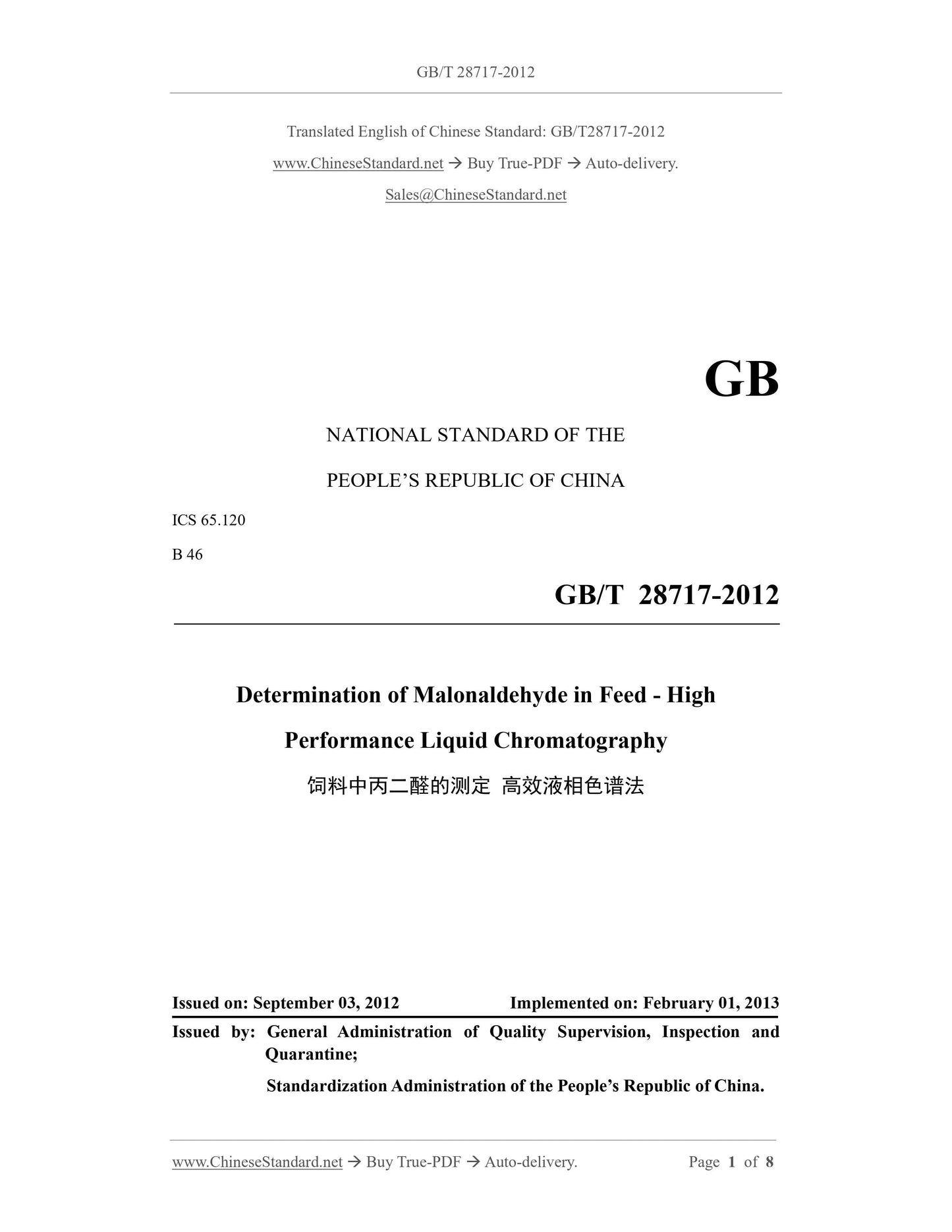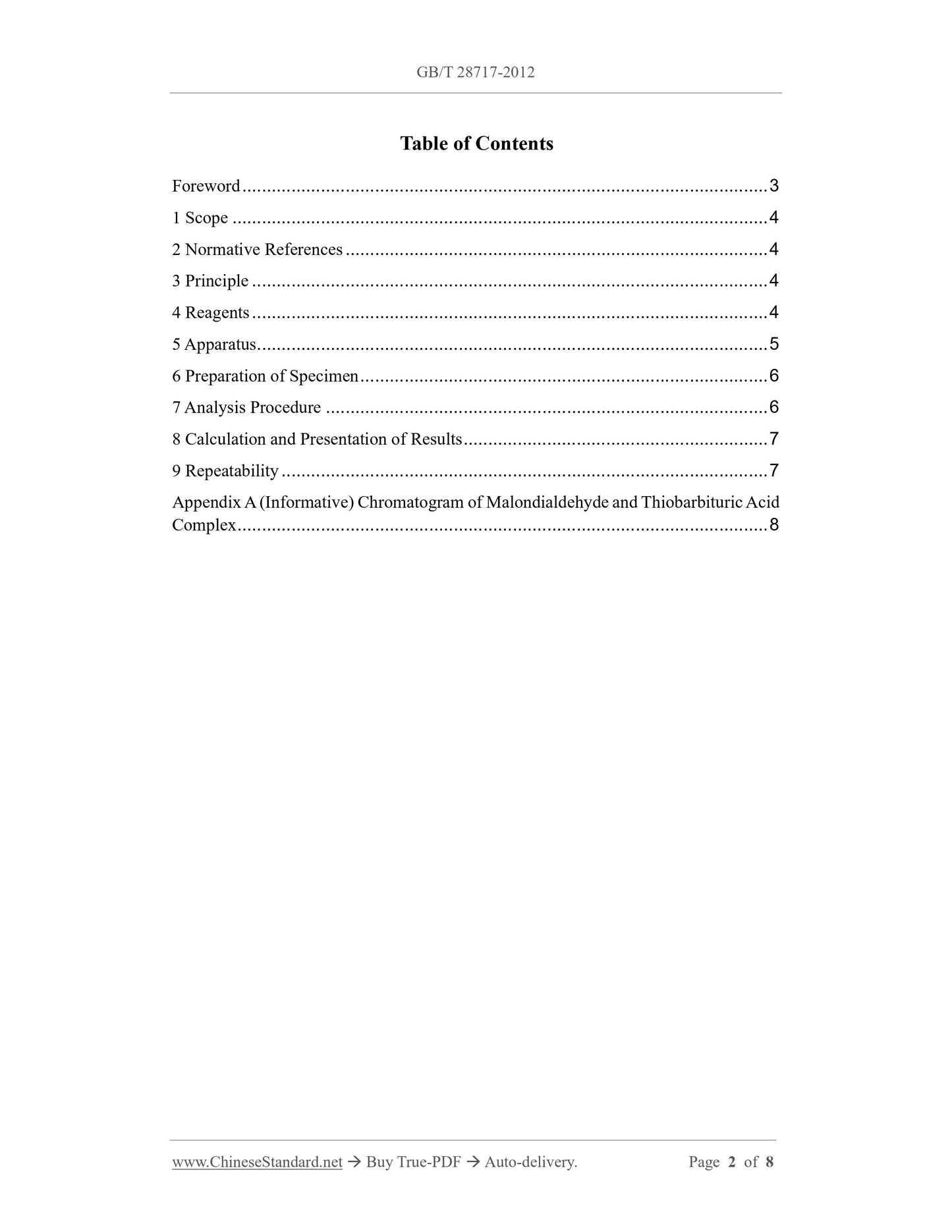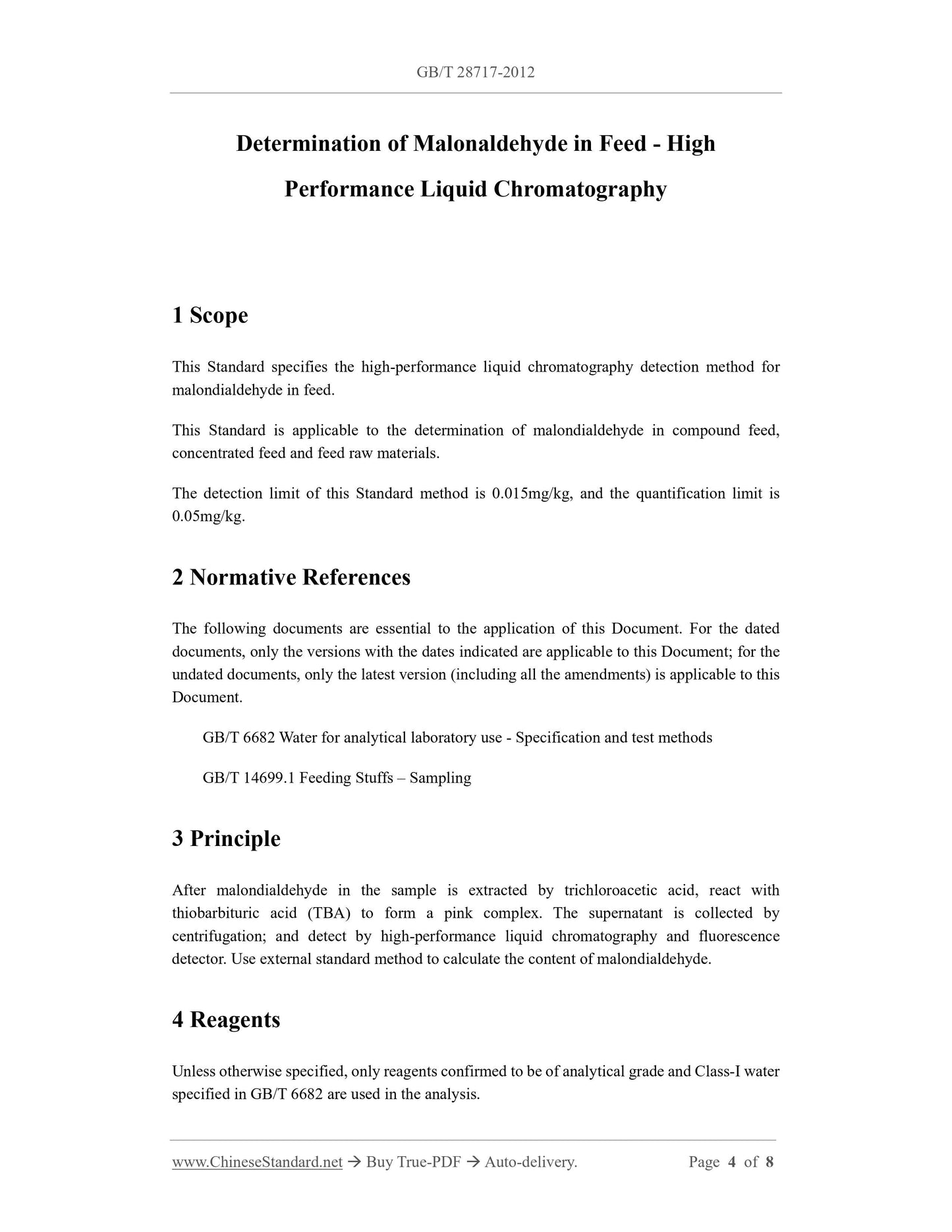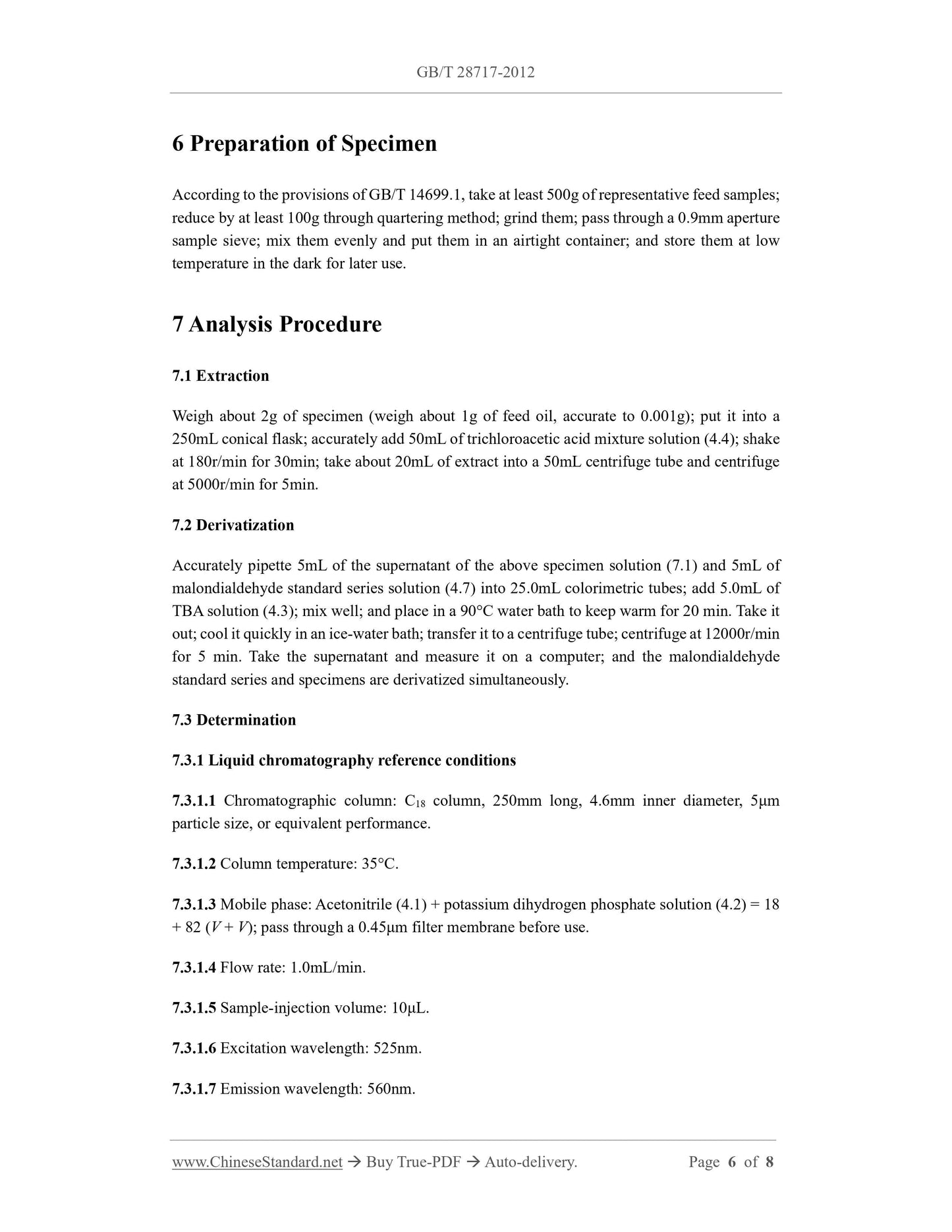1
/
of
4
www.ChineseStandard.us -- Field Test Asia Pte. Ltd.
GB/T 28717-2012 English PDF (GB/T28717-2012)
GB/T 28717-2012 English PDF (GB/T28717-2012)
Regular price
$125.00
Regular price
Sale price
$125.00
Unit price
/
per
Shipping calculated at checkout.
Couldn't load pickup availability
GB/T 28717-2012: Determination of malonaldehyde in feed -- High performance liquid chromatography
Delivery: 9 seconds. Download (and Email) true-PDF + Invoice.Get Quotation: Click GB/T 28717-2012 (Self-service in 1-minute)
Newer / historical versions: GB/T 28717-2012
Preview True-PDF
Scope
This Standard specifies the high-performance liquid chromatography detection method formalondialdehyde in feed.
This Standard is applicable to the determination of malondialdehyde in compound feed,
concentrated feed and feed raw materials.
The detection limit of this Standard method is 0.015mg/kg, and the quantification limit is
0.05mg/kg.
Basic Data
| Standard ID | GB/T 28717-2012 (GB/T28717-2012) |
| Description (Translated English) | Determination of malonaldehyde in feed -- High performance liquid chromatography |
| Sector / Industry | National Standard (Recommended) |
| Classification of Chinese Standard | B46 |
| Classification of International Standard | 65.120 |
| Word Count Estimation | 7,75 |
| Quoted Standard | GB/T 6682; GB/T 14699.1 |
| Regulation (derived from) | National Standards Bulletin No. 24 of 2012 |
| Issuing agency(ies) | General Administration of Quality Supervision, Inspection and Quarantine of the People's Republic of China, Standardization Administration of the People's Republic of China |
| Summary | This standard specifies the feed MDA HPLC method. This standard applies to feed, concentrated feed, feed ingredients malondialdehyde. This standard method detection limit of 0. 015 mg/kg, the limit of quantification was 0. 05 mg/kg. |
Share







